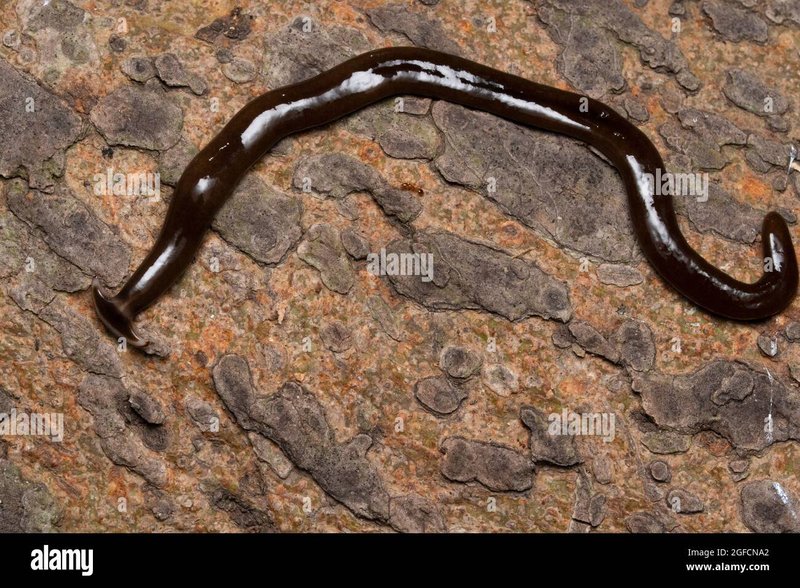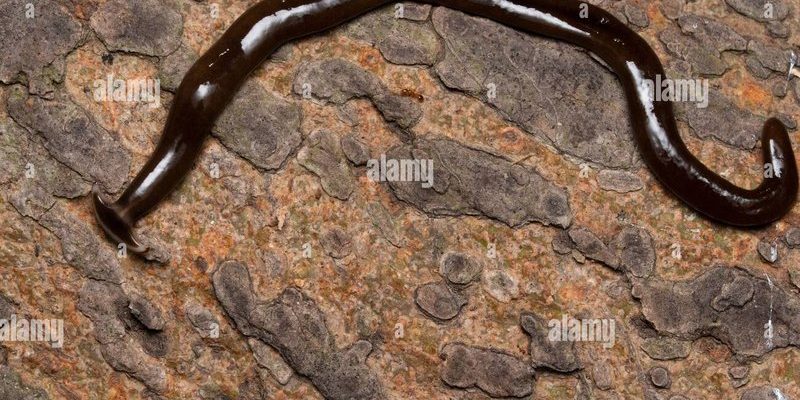
Imagine you’re sipping coffee with a friend, and they ask, “What’s the deal with those weird worms?” You might say, “Oh, you mean the hammerhead worms? They’re fascinating! But they’re not the same as slugs or millipedes.” Understanding these differences not only makes your walks in nature more enjoyable, but it also helps you appreciate the biodiversity around you. So, let’s get into the nitty-gritty of hammerhead worms, millipedes, and slugs.
What Are Hammerhead Worms?
Hammerhead worms, part of the **Bipalium species**, are interesting creatures that stand out from the crowd. Their most notable feature is their distinct hammer-like head, which can be quite striking when you spot one. Usually, they have a flat, elongated body that can vary in color from brown to gray, often adorned with stripes. This unique shape gives them an almost prehistoric look, making them a fascinating subject in the world of invertebrates.
They can grow quite large—up to a foot long! If you’ve ever seen one, you might have noticed how they move, gliding smoothly over surfaces. They thrive in moist environments, making gardens, leaf litter, and even your home’s damp corners their favorite hangouts. A fun fact? Hammerhead worms are carnivorous and primarily feast on earthworms, which makes them a bit of a pest to have around if you’re into gardening.
Characteristics of Millipedes
Next up, we have **millipedes**. Often mistaken for worms or centipedes, these critters are more than just their segmented bodies suggest. They typically range from a few millimeters to several centimeters in length. Unlike hammerhead worms, millipedes have a rounded body and are covered in many small, hard segments, with two pairs of legs per body segment. Their appearance can vary widely, with some being brown or black, while others display striking patterns or even colors.
Millipedes are primarily scavengers. This means they play a vital role in breaking down organic matter like dead leaves. If you stumble upon one, you’ll notice their slow, lumbering movement. They often curl up when threatened, which is a neat defense mechanism. You might also catch a whiff of a strong odor if they feel threatened, serving as a warning to potential predators.
Understanding Slugs
Now, let’s talk about **slugs**, those slimy little creatures that often appear in the garden. Slugs are a type of mollusk, and they lack a hard shell, making them quite different from both hammerhead worms and millipedes. Typically, they have soft bodies and can come in various colors, including gray, brown, or even yellow. Their skin is usually moist and glossy, which helps them move smoothly over surfaces.
Slugs are nocturnal and love to feast on decaying vegetation or living plants. If you’ve seen holes in your favorite leaves, it’s quite possible a slug is the culprit. They also produce a slimy mucus trail that aids in movement and moisture retention. Slugs are also more likely to be spotted in wet conditions, especially after rain, when they venture out to forage.
Key Differences Between Hammerhead Worms, Millipedes, and Slugs
So, how do you distinguish these three creatures? Let’s break it down into easy-to-remember traits:
- Body Shape: Hammerhead worms have a flat, elongated body and a distinctive hammer-shaped head. Millipedes have a round, segmented body with lots of legs, while slugs have soft, shell-less bodies.
- Movement: Hammerhead worms glide smoothly, millipedes move slowly and deliberately, and slugs slither along in a slimy trail.
- Habitat: All three are common in damp environments, but hammerhead worms might also invade homes, whereas millipedes and slugs are usually found in gardens and under leaf litter.
- Diet: Hammerhead worms are carnivorous, targeting earthworms; millipedes primarily eat decaying plant material; and slugs enjoy a mix of decaying matter and living plants.
Remembering these traits can make the next time you’re out in nature a lot more engaging. And who knows? You might become the go-to nature expert among your friends!
Why Distinguishing Is Important
You might wonder why it matters to tell these creatures apart. Well, understanding what you’re looking at can be essential, especially if you’re a gardener or a nature enthusiast. Hammerhead worms can be harmful to your garden since they feed on beneficial earthworms. Knowing this can help you decide if you want to remove them from your space.
Millipedes, on the other hand, are generally harmless and beneficial because they help decompose organic material. Slugs, however, can be a nuisance because of their appetite for your plants. Understanding these roles can significantly impact how you manage your garden or outdoor space.
Helpful Tips For Identification
If you’re still a bit unsure about identifying these creatures, here are some helpful tips to make it easier:
1. **Observe the Shape**: Get up close (but don’t touch!) and take a good look. Is it flat with a unique head? It might be a hammerhead worm. Is it round and segmented? That’s likely a millipede. Is it soft and slimy? You’ve spotted a slug.
2. **Check for Legs**: If you see a lot of legs, you’re likely looking at a millipede. Remember, they have two pairs of legs per body segment. If there are no legs or just a few, it’s probably a slug or a hammerhead worm.
3. **Consider the Habitat**: Think about where you found them. Slugs and millipedes prefer damp soil and leaf litter, while hammerhead worms can sometimes sneak into homes.
4. **Watch Their Behavior**: Millipedes tend to be more sluggish, while hammerhead worms will glide. Slugs produce a slimy trail, a sure giveaway of their presence.
With these strategies, you’ll be a pro in no time!
Final Thoughts on the Trio
Distinguishing hammerhead worms from millipedes and slugs is all about observation and understanding their unique traits. The next time you come across one of these creatures, you’ll know exactly what you’re dealing with.
The world of nature is full of surprises, and knowing how to identify these fascinating critters will enhance your outdoor experiences. So grab that cup of coffee, head into your garden, and take a closer look—you might just find something amazing!

